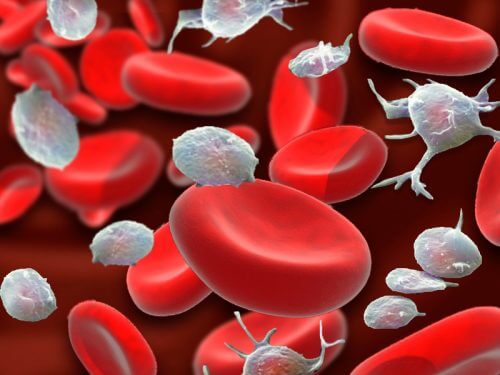The Risks of Post-Operative Bleeding

Injury or trauma can cause post-operative bleeding, which may also show itself in the form of blood clotting. The different types of blood vessels carry oxygen and nutrients to tissues. When blood vessels become damaged, bleeding can occur inside or outside them.
Hemostasis is the process that causes bleeding to stop in damaged blood vessels. The necessary factors for a clot to form include:
- Platelets. Platelets are very small cells that the bone marrow produces. Normal platelet count is between 150,000 and 400,000.
- Clotting factors. These factors are found in the blood and are produced mainly in the liver.
Surgery increases the risk of venous and arterial thromboembolism. Experts also know that the temporary interruption of antithrombotics creates a higher risk of thrombosis and embolism.
The risk of pre-operative bleeding induced by oral anticoagulants is usually low. However, it’s high during and after surgery, depending on the surgical procedure.
Risk factors for post-operative bleeding

A risk assessment of a surgical procedure is necessary for these patients. For this reason, the type of antithrombotic treatment the doctor chooses will depend on the patient’s condition.
Thus, doctors must assess both the thrombotic and hemorrhagic risk of the surgical procedure. The thrombotic risk of the surgical procedure is important due to the increased risk of thrombosis when the doctors interrupt the anticoagulant/antiplatelet therapy.
In these cases, doctors can opt for continuing or interrupting the anticoagulant therapy. If they choose to interrupt it, they should prescribe heparin and then restart the therapy with oral anticoagulants. This is due, above all, to post-operative immobility, but also to the prothrombotic effect of the surgery itself.
You may also enjoy the following article: How to Treat Postpartum Hemorrhages
Post-operative bleeding
Major bleeding is severe bleeding that needs a transfusion of at least two units. It can also be intracranial, intrathoracic, or peritoneal bleeding.
When faced with a bleeding complication, the treatment the doctor will choose will depend on the extent and location of the bleeding. Also, the levels of anticoagulation play an important role. Fatal or life-threatening bleeding is also considered major.
The chance of bleeding will also condition the reintroduction of post-operative antithrombotic therapy since the beginning of anticoagulation in cases of high bleeding risk will vary. If suppression of anticoagulation is continued for more than a day, the medical professional may have to consider administering heparin.
This article may interest you: Do You Need to Raise Your Platelet Count? These 4 Remedies Can Help
Resumption of anticoagulant therapy after surgery

Anticoagulant therapy should be resumed two to three days after surgery. However, you should always consult with your doctor.
You should start with low doses, meaning those used in prophylaxis, two to three days after surgery. You should start therapeutic doses after 48-72 hours, only if you’re not suffering from continuous post-operative bleeding.
Most patients treated with both warfarin and acenocoumarol can resume anticoagulant therapy on the night of the surgical intervention, as long as they’re not suffering from bleeding complications.
However, the therapeutic effect won’t begin until four to five days after having started anticoagulant therapy. One of the main goals for the patient who has been through anti-coagulation is to recover their antithrombotic state as soon as possible. Medical professionals must take adequate post-operative hemostasis and the risk of bleeding associated with the procedure into account.
In general, most post-operative hemorrhages resolve within 24 hours of surgery. However, this may not always be the case, which is why anticoagulation shouldn’t be started until hemostasis returns to normal.
All cited sources were thoroughly reviewed by our team to ensure their quality, reliability, currency, and validity. The bibliography of this article was considered reliable and of academic or scientific accuracy.
- Vivancos, J., Gilo, F., Frutos, R., Maestre, J., García-Pastor, A., Quintana, F., & Ximénez-Carrillo. (2016). Guía de actuación clínica en la hemorragia subaracnoidea. Sistemática diagnóstica y tratamiento. Neurologia. https://doi.org/10.1016/j.nrl.2014.10.002
- Tortora, G. J., & Derrickson, B. (2006). Hemostasia. In Principios de Anatomía y Fisiología.
- García, M. C. L., & Ramos, J. A. (2018). Hemorragia posparto. In Ejercer la medicina. https://doi.org/10.2307/j.ctt21kk0w3.24
This text is provided for informational purposes only and does not replace consultation with a professional. If in doubt, consult your specialist.








